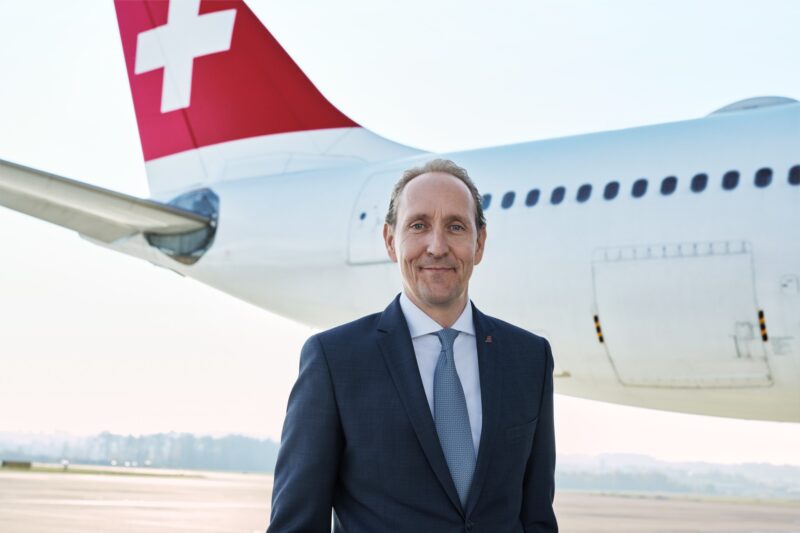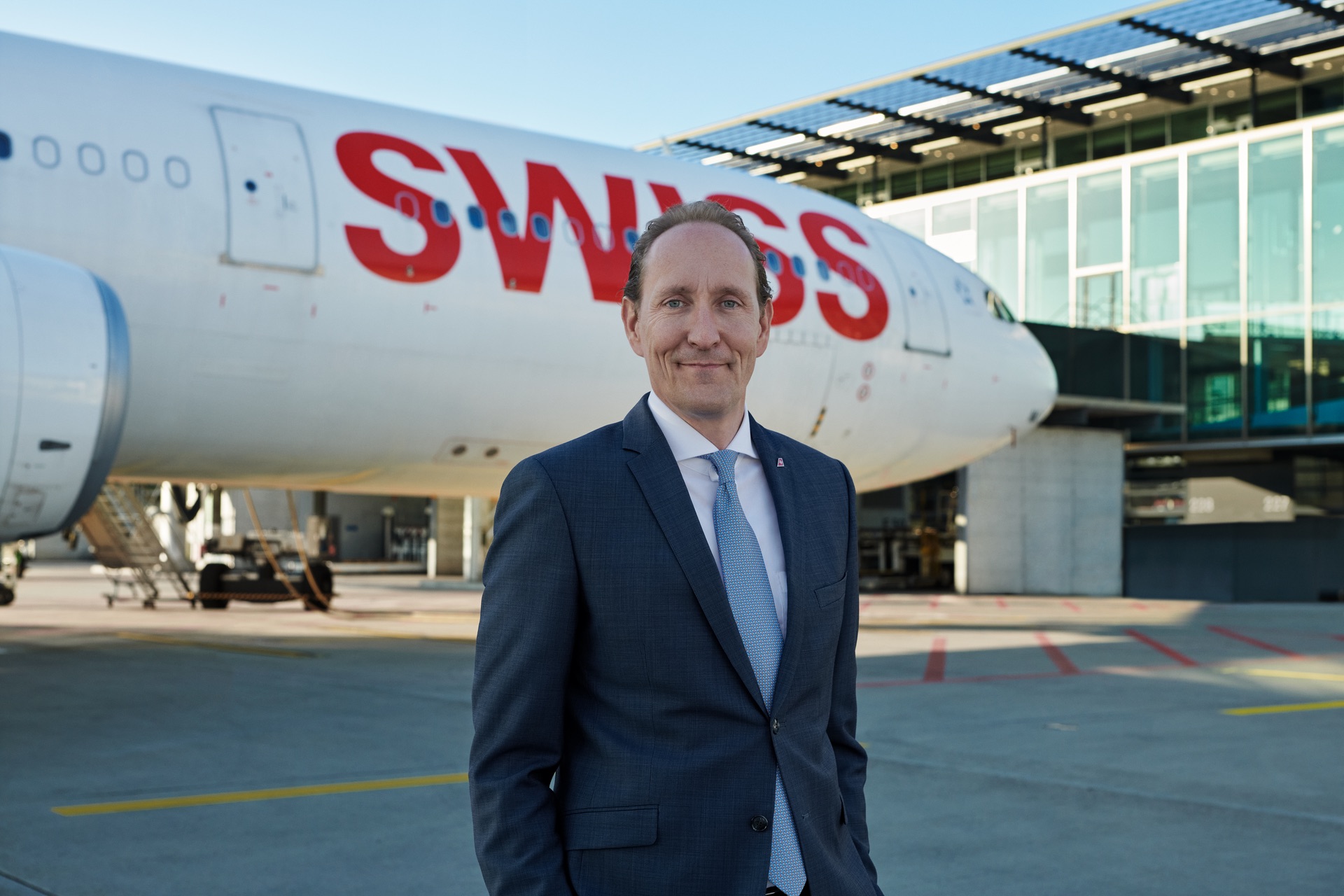Currently, the flag carrier in Switzerland working to extend the operation of its Airbus A320ceo fleet to cover groundings related to Pratt & Whitney GTF engine issues, while also looking at the future of its long-haul fleet with the A350-1000 a potential candidate to join one day.
“Regarding the A320ceo lease extensions, we have discussed with our management which aircraft we can extend operation for a few years,” Swiss CEO Dieter Vranckx tells CEO TALKS in an interview at the carrier’s head office in Zurich. “This would be one part of a solution, but it will not solve the engine problem completely.”
Swiss is currently examining this option to add potential flexibility, "but so far, we have not made a final decision on how many aircraft could continue to operate in the fleet for a longer period,” Vranckx says.
The carrier expects GTF issues to remain a topic for Swiss into 2026.
“We would prefer to operate all flights with our own aircraft and crew members instead of wet-leasing aircraft. However, we have to face reality and make the best of it.”
Swiss CEO Dieter Vranckx
While the A220 and A320 family fleet will remain the backbone of its short- and medium-haul network, on the long-haul segment Swiss is entering a new era. The flag-carrier is integrating five Airbus A350-900s which are gradually replacing the last four A340s. The first aircraft is expected for delivery in 2025. The A350 entry-into-service process will start mid-2025.
“It is clear that when we begin operating A350s, this will not only involve operating them as a sub-fleet. At a later stage, the A350 could also replace the A330 when this aircraft is reaching its end of lifecycle."
Swiss CEO Dieter Vranckx
The CEO says that it is also important for Swiss to think further ahead and the future of its 12 Boeing 777-300ERs. “Decisions about a new fleet should not be made for the next few years; you must make them for the next generations,” he says.
In this context, the decision to acquire the A350 was important for Swiss. Not only does this aircraft mitigate emissions, but the family also offers a successor to the 777.

A350-1000 -an Option to Replace B777-300/ER
“The A350-900 is clearly intended as a replacement for the A340 and is also a viable option for replacing the A330,” Vranckx said. “The A350-1000 may potentially serve as an option to replace the 777 in the future.”
Sustainability is a focus for the carrier. Swiss became the first airline to deploy Lufthansa's Technik's innovative AeroShark riblet film technology on its aircraft. By applying a total of 950 m² of the film to the fuselage and engine nacelle surfaces of a 777, fuel savings of some 1.1% to 1.5% per flight can be achieved.
“We also intend to implement AeroShark for our 12 Airbus A330-300s. Currently, we are awaiting certification in 2024. Subsequently, our goal is to integrate sharkskin technology into the A330 fleet by 2025,” Vranckx says.
In the next four years, 20 new aircraft will be delivered, including five A350-900s from 2025 onward, as well as 15 A320neo-family aircraft. “In 2024, every quarter we receive a new A320neo—four aircraft this year,” he added.
As the geopolitical environment has also altered numerous air routes, such as those flying to the Far East but avoiding the airspace of Russia and Ukraine, Swiss is analyzing the economics of these long-haul flights daily. One such example is flights to Japan.
“It is important for us to maintain connections with multiple countries. For instance, while we connect Japan with Tokyo, we do not serve Osaka directly, as it is easily accessible via Tokyo,” Vranckx says. “Operating flights to Japan is expensive. It involves long flights, and the aircraft remains away from its home base for an extended period.“
That’s why the decision to open the Zurich-Seoul route was clear, as South Korea represents a new market for the airline. When asked about the profitability timeline for a new route, Vranckx says, “As fast as possible“.
Swiss is set to add a total of 10 new routes in 2024, operating to a total of 114 destinations, including new long-haul service to Washington, Toronto, and Seoul—as well flights to London Gatwick, the third airport to which the carrier operates in the London area
Swiss operated 130,000 flights last year and transported 16.5 million passengers.


